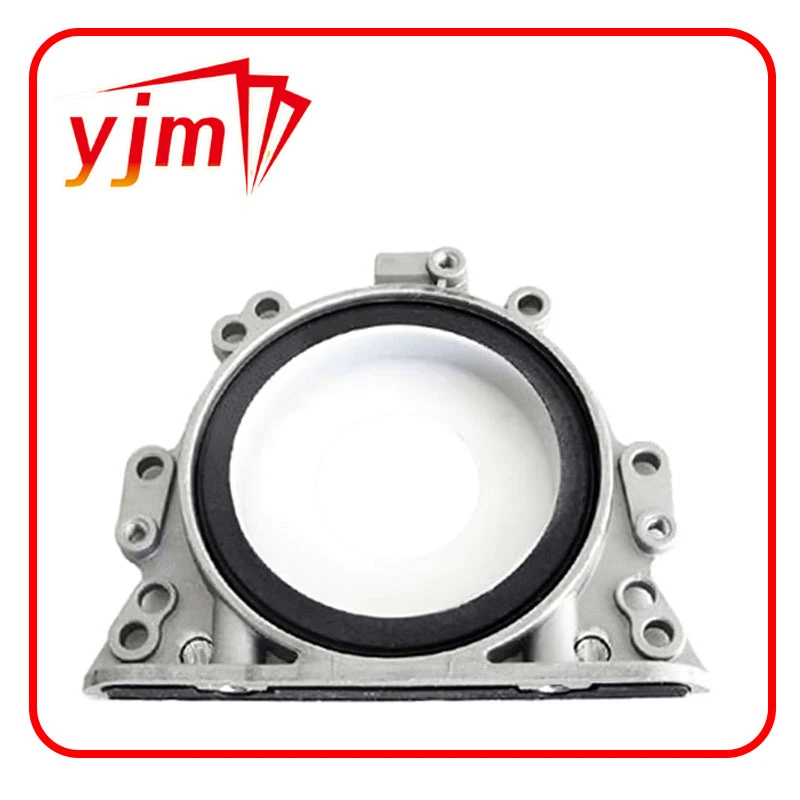rear crankshaft main bearing seal
Understanding the Rear Crankshaft Main Bearing Seal A Comprehensive Overview
The rear crankshaft main bearing seal plays a crucial role in the operation and longevity of an internal combustion engine. This often-overlooked component is essential for maintaining the integrity of the engine's oil system, assisting in performance, efficiency, and overall reliability. This article will delve into the function, common issues, maintenance practices, and replacement procedures related to the rear crankshaft main bearing seal.
What is the Rear Crankshaft Main Bearing Seal?
The rear crankshaft main bearing seal is situated at the back end of the crankshaft, sealing the crankcase from the outside environment and preventing engine oil from leaking out. It is typically made from a durable rubber or synthetic material designed to withstand high temperatures, pressures, and the corrosive nature of engine oil. The seal ensures that the engine maintains optimal oil pressure, which is vital for lubricating various components, reducing friction, and preventing wear.
Function of the Rear Crankshaft Main Bearing Seal
As the crankshaft rotates, it generates movement that powers the engine's pistons. The rear crankshaft seal is critical in retaining the engine oil within the crankcase. Without it, oil would leak out, leading to a drop in oil levels, increased friction, overheating, and potential engine damage. Additionally, this seal keeps contaminants, such as dirt and moisture, from entering the engine, further protecting its internal components.
Common Issues with the Rear Crankshaft Main Bearing Seal
Despite its importance, the rear crankshaft main bearing seal is not immune to wear and tear. Over time, exposure to heat, oil, and environmental elements can cause the seal to degrade, leading to various problems
1. Oil Leaks One of the most obvious signs of a failing rear crankshaft seal is oil leakage. This can lead to oil puddles under the vehicle and can create a mess in the engine compartment.
2. Increased Oil Consumption If the seal is compromised, you may find that your vehicle consumes oil at a higher rate than normal. This can lead to frequent oil top-ups and can affect engine performance.
3. Contaminant Ingress A damaged or worn seal may allow dirt and moisture to enter the engine, leading to further wear and potential engine failure.
rear crankshaft main bearing seal

Maintenance of the Rear Crankshaft Main Bearing Seal
Regular maintenance and inspections can help extend the life of the rear crankshaft main bearing seal. Here are some practices to consider
- Regular Oil Changes Keeping the engine oil clean and at the proper level reduces the workload on the seal and helps it function efficiently. - Visual Inspections Check for signs of oil leaks or excessive oil buildup around the seal area during routine vehicle inspections.
- Temperature Monitoring Excess heat can degrade the seal material. Keeping an eye on the engine's operating temperature can provide insights into the health of the engine and its components.
Replacement of the Rear Crankshaft Main Bearing Seal
If a rear crankshaft main bearing seal is found to be faulty, prompt replacement is essential to prevent further damage. The replacement process can be complex and typically involves
1. Engine Disassembly Accessing the rear seal usually requires significant disassembly, including the removal of the transmission and possibly the oil pan.
2. Seal Removal The old seal must be carefully removed to avoid damaging the crankshaft and surrounding components.
3. Installation of the New Seal The new seal should be installed evenly and securely to prevent future leaks.
4. Reassembly and Testing After the replacement, the engine components should be reassembled, and the vehicle should be tested to ensure the seal is functioning correctly.
Conclusion
The rear crankshaft main bearing seal is a small but vital component of an internal combustion engine. By understanding its function, maintaining it properly, and knowing when to replace it, vehicle owners can ensure their engines run smoothly and effectively. Regular checks and prompt maintenance are key to preventing the serious consequences of a failing seal, ultimately leading to a longer lifespan for the engine.
-
Simplifying Oil Changes: A Comprehensive Guide to Oil Drain Plugs and Their Variants
News Aug.04,2025
-
Mastering Oil Drain Maintenance: Solutions for Stripped, Worn, and Upgraded Oil Plugs
News Aug.04,2025
-
Fixing Oil Pan Plug Issues: Leaks, Stripped Nuts, and the Right Replacement Solutions
News Aug.04,2025
-
Everything You Need to Know About Oil Drain Plugs: Sizes, Fixes, and Upgrades
News Aug.04,2025
-
Choosing the Right Oil Drain Plug: A Guide to Sizes, Materials, and Drain Innovations
News Aug.04,2025
-
A Complete Guide to Automotive Drain Plugs: Types, Problems, and Innovative Solutions
News Aug.04,2025
-
The Ultimate Guide to Car Repair Kits: Tools and Essentials Every Driver Should Own
News Aug.01,2025
Products categories















